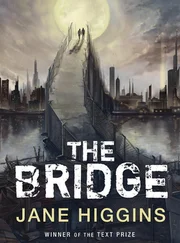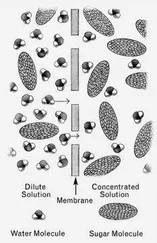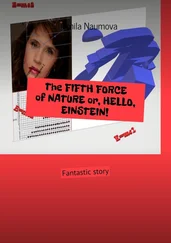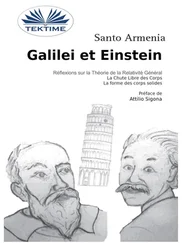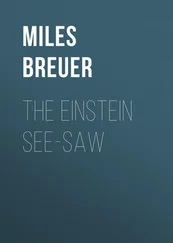Edwina winced. “I’ve already looked into enlarging the aperture,” she said. “You’re talking about a billion-dollar design change, Roger. The magnets will get bigger, more expensive, and harder to cool. The field of each magnet will go down, so more magnets will be needed to bend the beam. But an increased number of magnets won’t fit into the tunnel as designed, so we will have to come up with a new tunnel design that’s miles longer, in order to accommodate the extra magnets. It’s much too expensive.”
“But at least the machine would work then,” said Roger.
She frowned. “There is that. See what can be done with layer and spacing modifications to the coil windings. And I’ll hope and pray that it works.”
“I’ll try,” said Roger.
“Try very, very hard, Roger,” said Edwina. “It will be my job to explain to the admiral that there’s been a slight design problem and that the SSC is going to cost a couple of billion dollars more than we had promised him it would. He’ll probably nail me to the mast as an example and make you guys walk the plank.” She turned and walked away, looking depressed.
FROM THE BROAD WINDOW OF THE PETROGEN PRESIdent’s office, George contemplated the dark brown meander of Buffalo Bayou weaving along Alien Parkway to the distant green swath of Memorial Park. He turned back to Roger. “We’re running into some problems on the political front,” he said. “The DOE has been clever about making SSC contracts in forty-three out of fifty states plus Puerto Rico, and that’s garnered them a lot of support in Congress. Construction has started on the accelerator buildings, and the Texas contractors and Texas state lobbyists are pushing very hard in support of the project. We’ve been stirring up the local residents with land near Waxahachie above the ring. They’ve formed a fairly vocal protest group and have given a lot of publicity to the fire ant problem, but the protests are not having as much effect as we’d projected.”
Roger shook his head. “It’s too bad we couldn’t block Bromley’s appointment to Science Advisor,” he said. “What went wrong?”
“Nobody we recommended would take the damned job,” said George.
Roger looked surprised. “Don’t they have a sense of duty?” he asked.
“This isn’t the United Kingdom,” said George. “Public service is not held in such high regard here. We’d convinced President Bush that better connections between science and business were essential to long-term economic growth. The top candidates for Science and Technology Advisor were all scientists or engineers with strong ties to the business world, mostly corporate executives. Bromley, as an academic, was down on Bush’s list. But then all of the corporate executive candidates declined to be considered because of the low salary and the new conflict-of-interest laws. The job only pays $72,000 per year. Any of them would have had to take a factor of three or more cut in pay and divest themselves of their stock holdings. I guess their sense of duty didn’t stretch that far.
“So Allan rose to the top of the list by process of elimination, and he was appointed. His Yale connection to Bush was too much for us. He’s already been very effective in presenting the case for the SSC to Congress.”
“Well,” said Roger, “at least we succeeded with Quayle and Watkins. Two out of three isn’t so bad in this business. It appears that the admiral’s Tiger Teams are already helping to create some diversion of effort.”
“Ah yes,” said George. “How did you manage that one? It was brilliant.”
“It did work surprisingly well,” said Roger. “I used my BBC reporter Roger Dalton persona to get an interview with the admiral. We’d already determined that he was a stickler for safety. When we shook hands, I Wrote him a hormonal boost in aggressiveness and caution, both useful attributes for a Cabinet member. Then I asked him a long list of pointed questions about the rampant safety problems at U.S. national laboratories like Oak Ridge, Argonne, Los Alamos, Livermore, and so on. I implied that I was preparing a BBC expose on the subject.
“The admiral immediately saw the potential for embarrassment, and he also saw the opportunity to bend the DOE national labs to his will. Within a week of my interview he’d recruited a few dozen of his old Navy mates, spit-and-polish retirees from his former nuclear Navy outfits. He formed them into what he called Tiger Teams. These Tigers descended on all the national laboratories like hungry carnivores on flocks of lambs. They demanded endless safety meetings, giant mountains of paperwork, a vast review and overhaul of all the lab safety procedures.”
“Yes, I heard about that,” said George. “Our contacts in the DOE labs report an amazing diversion of effort and loss of morale. For example, some lab technicians are boosting their status by becoming ‘safety informers,’ turning in scientists to the Tigers. It’s like Stalin’s Russia.”
“Right,” said Roger. “The DOE labs have essentially halted scientific research while everyone scrambles around attending safety seminars, writing detailed safety procedures for every conceivable scenario of possible disaster, and filling vast bookshelves with thousand-page documents that no one will ever read. Senior lab officials that have protested have been threatened with dismissal.”
“There are definite indications that the Tigers diverted effort away from the SSC redesign,” said George. “The design efforts at Fermilab, LBL, and Brookhaven are down, just when the old LBL dipole magnet design is being closely studied and reevaluated. Everyone involved is overworked, and consequently they’re doing a very conservative redesign because they have no time for creative solutions.”
Roger shook his head and looked downward. “Actually,” he said, “I feel rather uncomfortable about what happened to Argonne. The lab was singled out by the Tigers and made an example for the rest. It was completely shut down; its science effort probably set back a year.
“And no one at any of the labs has yet figured out what hit them. I’d feel really awful about having instigated all of that, if it wasn’t in the interest of saving the universe.”
“It’s interesting that all the activity surrounding Watkins’s Tigers made no impression on the news media,” said George. “I haven’t seen a thing about it. Any idea why?”
Roger grinned. “A CBS reporter explained to me that safety is an intrinsically boring subject,” he said. “According to him, safety has absolutely no news value unless there’s a disaster, and even then it’s only good for thirty seconds of pious moralizing.”
“Well,” said George, “the net effect on the SSC redesign is becoming apparent. The DOE just made an announcement about the revised project. The machine now uses eighty-eight hundred of the new five-centimeter aperture dipoles and needs an extra kilometer or so of tunnel. The new official DOE cost of the redesigned SSC has risen to $8.2 billion from U.S. federal funds, with an extra $1.6 billion expected from foreign contributions.”
Roger whistled. “Total $9.8 billion… That’s more than double the first DOE cost estimate.”
“And more, in our universe, than the machine actually cost to build,” said George. “The new congressional emphasis on foreign contributions is very good for us. My contacts have been promoting the idea of the need for strong international financial participation in the SSC. It isn’t too easy, because there is strong feeling in Congress that all of the high-technology items, which represent most of the cost, must be built here in this country. But the most recent SSC appropriations bill contains the requirement that the SSC project must have about a billion dollars in contributions from other countries. That means Japan. Have you been able get a reading on the SSC at the Japanese end?”
Читать дальше


